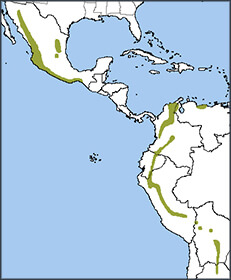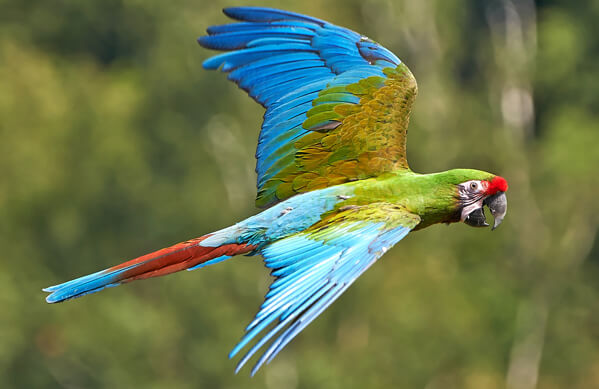 The Military Macaw probably got its name from the military personnel who first imported the birds to Europe as pets. In the wild, this parrot occurs in three subspecies throughout a large but fragmented range extending from Mexico to Argentina.
The Military Macaw probably got its name from the military personnel who first imported the birds to Europe as pets. In the wild, this parrot occurs in three subspecies throughout a large but fragmented range extending from Mexico to Argentina.
A Victim of Pet Trade
Like the Great Green, Blue-throated, and Lear's Macaws, these beautiful and intelligent parrots are popular cage birds, widely captured for the pet trade within their home countries. Another major threat to these macaws is habitat loss, caused mainly by deforestation for agriculture and settlement.
Like other parrots, Military Macaws are quite noisy; their raucous calls and shrieks can be heard far and wide as flocks travel between roosts, nests, and feeding sites.Favored foraging areas are the highest outer branches of trees, where these macaws forage for fruits and nuts. They nest in tree cavities and on high cliff faces. Once mated, pairs stay together for life.
Sign up for ABC's eNews to learn how you can help protect birds

Military Macaw by Vaclav Volrab, Shutterstock
Protecting the Military Macaw
ABC recently helped to protect additional acreage at Ecuador's Narupa Reserve to protect the Military Macaw and other threatened resident and migrant bird species, including the Cerulean Warbler. Other migrants seen here include Canada Warbler, Olive-sided Flycatcher, and Swainson's Thrush.
ABC's Benjamin Skolnik calls the reserve expansion “just the beginning of what we aim to be a much larger effort to consolidate forests for wintering warblers and other migrants in Latin America.”
Take a virtual tour of Ecuador's bird life with Skolnik, or learn about another Ecuador reserve expansion, focused on the rare El Oro Parakeet.
Donate to support ABC's conservation mission!



















































